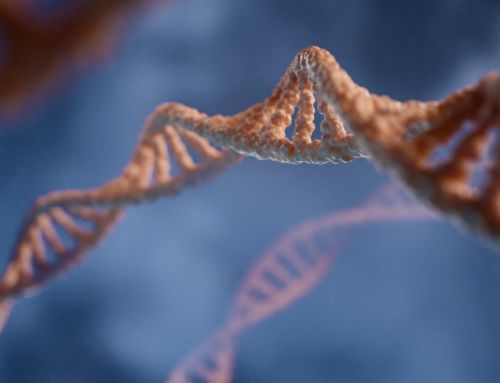Delayed Onset Muscle Soreness
You’ve exerted maximum effort in your recent workout and feel accomplished immediately afterward. However, as the hours pass—or even a day or two later—you’re greeted by muscle discomfort that’s impossible to ignore. Welcome to the world of Delayed Onset Muscle Soreness, commonly abbreviated as DOMS. This phenomenon is a common experience for athletes, fitness enthusiasts, and even individuals who engage in occasional strenuous physical activity.
So, what exactly is happening within your muscle tissues? Is this discomfort a sign of effective training, or an indicator that you’ve possibly pushed your limits too far? In the forthcoming article, we will comprehensively explore the underlying causes, symptoms, and management strategies for DOMS. Your long-term muscle health may depend on it.
What Causes Delayed Onset Muscle Soreness?
You’re grappling with Delayed Onset Muscle Soreness and the question on your mind is, “What triggered this?” Unpacking the mechanisms behind DOMS requires a closer look at multiple biological factors, each contributing to this perplexing phenomenon.
Muscle Fiber Damage: A Double-Edged Sword
- What Happens: When you engage in novel or high-intensity exercise, micro-tears form in your muscle fibers.
- Why It’s Important: These micro-tears trigger the body’s repair mechanisms, ultimately strengthening the muscle.
- The Catch: While beneficial in the long run, these tears are the first culprits in the onset of DOMS.
Inflammation: The Body’s Firefighter
- What Happens: In response to muscle damage, your body’s natural defense mechanisms kick in.
- Role in DOMS: Inflammation rushes to the damaged area to initiate healing but also contributes to muscle stiffness and soreness.
- Time Frame: Unlike acute inflammation, the inflammation associated with DOMS can linger, adding to the prolonged discomfort.
Lactic Acid: The Scapegoat
- Common Myth: Lactic acid accumulation is often mistakenly believed to be the main cause of DOMS.
- Reality Check: Lactic acid clears out of the system relatively quickly post-exercise.
- Innocent Bystander: While it may contribute to immediate exercise fatigue, it’s not the lasting villain in our DOMS narrative.
Summary Points:
- Muscle Fiber Damage: Initiates the cycle, leading to stronger muscles but causing initial discomfort.
- Inflammation: A necessary but sometimes bothersome element in the DOMS equation.
- Lactic Acid: Mostly misunderstood, it’s not the primary cause of Delayed Onset Muscle Soreness.
Grasping the underlying factors of Delayed Onset Muscle Soreness paves the way for more effective management and prevention strategies. In the following sections, we will distinguish DOMS from other forms of muscle discomfort and provide actionable solutions to alleviate its effects.

Symptoms and Diagnosis of Delayed Onset Muscle Soreness
Understanding the root causes of Delayed Onset Muscle Soreness sets the stage for identifying its presence in your post-workout life. Recognizing DOMS involves more than just a casual observation of sore muscles; it requires a nuanced understanding of a range of symptoms that distinguish it from other muscular issues.
The Telltale Signs: Pain and Stiffness
When it comes to DOMS, deep, aching pain coupled with stiffness is the name of the game. Unlike the soreness you might feel immediately after a workout, the peak discomfort of DOMS makes its grand entrance anywhere from 24 to 72 hours post-exercise. This delayed timeframe is crucial for pinpointing DOMS and sets it apart from other types of muscle discomfort or injury.
The Subtle Clues: Swelling and Reduced Range of Motion
Then there are the subtler signs—slight swelling in the affected area and a reduced range of motion in the sore muscle. These might fly under the radar, but they’re telling indicators that you’re dealing with Delayed Onset Muscle Soreness.
Differentiating DOMS from Other Injuries
It’s easy to jump to conclusions when you experience muscle pain. However, other injuries like muscle strains and sprains usually present as sudden sharp pains that often occur during the activity itself. In contrast, the creeping onset and eventual peak of DOMS make it a unique category of muscle discomfort.
So how can you self-diagnose? Ask yourself some probing questions. Did the discomfort surface several hours, or even a day or two, after engaging in new or intensive physical activity? Is the muscle ache more akin to a deep, persistent pain rather than a sharp, immediate sensation? Are you experiencing a reduced range of motion in the affected muscle?
If your answers tilt towards ‘yes,’ then you’re likely grappling with Delayed Onset Muscle Soreness. As we proceed, we will explore strategies designed not only to manage this pesky condition but also to prevent it from raining on your fitness parade.
Managing and Alleviating Delayed Onset Muscle Soreness: Proactive Strategies
You’ve nailed down what causes Delayed Onset Muscle Soreness and you’ve learned to recognize its telltale symptoms. The logical next step is tackling this nagging issue head-on. The good news is that DOMS isn’t a life sentence; there are several proactive strategies to manage and alleviate the discomfort.
The Power of Active Recovery
The phrase “fight fire with fire” springs to mind when we talk about active recovery. Though it may sound counterintuitive, light exercise can indeed be a silver bullet for tackling Delayed Onset Muscle Soreness. Swimming, cycling, or even a casual walk can stimulate blood flow to the affected muscles, speeding up the healing process.
RICE: An Oldie but a Goodie
You can’t go wrong with the tried-and-true RICE method—Rest, Ice, Compression, and Elevation. Especially when DOMS is at its peak, it can make a world of difference. Rest allows your muscles to heal, while ice combats inflammation, and compression and elevation help to reduce swelling.
Nutritional Interventions: Eat Your Way Out
What’s on your plate can have a significant impact on how you experience DOMS. Foods rich in omega-3 fatty acids, antioxidants, and protein can act as your culinary allies in fighting off the symptoms of Delayed Onset Muscle Soreness.

When to Seek Professional Help
While DOMS is usually a self-limiting condition, sometimes it can be a wolf in sheep’s clothing. How can you tell if your symptoms warrant a visit to the doctor? Severe unrelenting pain, significant swelling, and an inability to move the joint should sound alarm bells.
In summary, managing and alleviating the symptoms of Delayed Onset Muscle Soreness is far from an unsolvable puzzle. By incorporating these proactive strategies, you’re not just putting a band-aid on the issue; you’re addressing it at its core, setting the stage for a more effective and less painful fitness journey.
Preventing Delayed Onset Muscle Soreness: Nipping It in the Bud
Now that we’ve traversed the landscape of what Delayed Onset Muscle Soreness is, how to recognize it, and ways to alleviate its symptoms, let’s pivot towards prevention. Because let’s face it, the best cure is always prevention. Why treat Delayed Onset Muscle Soreness when you can avoid its unwelcome arrival in the first place?
Gradual Progression: Easy Does It
Remember the tortoise and the hare? Slow and steady often wins the race, especially when it comes to ramping up exercise intensity. A gradual increase in your workout difficulty allows your muscles to adapt without undergoing severe stress, thereby minimizing the risk of DOMS.
Pre- and Post-Workout Stretching: Not Just an Afterthought
You might be tempted to skip stretching, but don’t underestimate its power. Incorporating a proper stretching regimen before and after your workouts can pave the way for more limber muscles and less susceptibility to Delayed Onset Muscle Soreness.
Hydration and Electrolytes: Don’t Run on Empty
Think of water and electrolytes as the oil that keeps your bodily machinery running smoothly. Poor hydration can exacerbate muscle cramps and soreness, so don’t skimp on fluids, especially during intense physical activity.
Mindful Technique: An Ounce of Prevention…
Perfecting your exercise technique can go a long way in staving off DOMS. Incorrect form not only reduces workout efficacy but also puts undue stress on your muscles, setting the stage for Delayed Onset Muscle Soreness. A qualified trainer can help correct any imbalances or flaws in your technique.
Key Prevention Tips: Quick Recap
- Gradual workout progression
- Consistent stretching
- Adequate hydration
- Proper exercise technique
So, is it possible to entirely avoid Delayed Onset Muscle Soreness? Perhaps not, but these preventive measures can significantly reduce its severity and frequency. Implementing these tips is like installing airbags in a car; while they may not prevent every bump and bruise, they’ll certainly mitigate the impact, making your journey towards optimal fitness a whole lot smoother.
Conclusion: Your Roadmap to Outmaneuvering Delayed Onset Muscle Soreness
So there you have it, folks—the ABCs of Delayed Onset Muscle Soreness, decoded and demystified. We’ve tackled everything from pinpointing its symptoms to battling it with proactive strategies, and even dodging its bullet through prevention. It’s your body, your rules; so why let DOMS call the shots? By applying these nuggets of wisdom, you’ll not just be treating Delayed Onset Muscle Soreness; you’ll be one step ahead of it. To sum it up:
- Know it: Recognize the symptoms.
- Manage it: Employ effective remedies.
- Avoid it: Take preventive measures.
Arm yourself with this knowledge, and you’ll be well on your way to a more comfortable and effective fitness journey.




